At various points throughout the life cycle of a pharmaceutical product, analytical procedures must be established. If these tasks are not appropriately simplified based on scientific knowledge and process understanding, it could result in an extremely expensive and time-consuming approach. The pharmaceutical industry is constantly looking for new guidelines or components to add to or replace the current components of the quality and risk management system The idea of Quality by Design was first introduced by renowned quality expert Joseph M. Juran. (QbD). Analytical method development, or AQbD, can be thought of as an extension of QbD. A methodical approach to development known as "Quality by Design" starts with predetermined objects and places a strong emphasis on process control, product and process understanding, and understanding .contemporary method approach The current review article's primary goal is to outline the various QbD processes while also addressing implementation-related issues. ATP (Analytical Target Profile), CP (Performance Attributes), MODR (Method Operable Design Region), Control Strategy, and Continual Method Improvement are all included in the creation of an analytical method
Formulation, Evaluation, Ashwagandha, Kalpa, Ayurveda
- Genetic: Childhood absence epilepsy, Juvenile absence & juvenile myoclonic epilepsy,Dravet syndrome.
- Structural: Stroke, Tumor, Alzheimer disease,Head trauma, Vascular malformation,Neural development lesions.
- Immune: Anti – NMDA Receptor encephalitis.Antoimmune ecephalitis.
- Metabolic: Hyperthermia, hyperglycaemia, hypocalcaemia, mitochondrial disease.
- Infection : Neurocysticercosis,Human immunodeficiency virus (HIV) , Cerebral toxoplasmosis, tuberculosis, cytomegalo virus.
SCENARIO :
- Worldwide there are an estimated at least 65 million people living with epilesy(4)& 2.2 million people in the United States (8)
- In low & middle income countries, estimates of the corresponding rate are generally higher (6)(4)& (5).
- According to WHO (World health organization)is estimated India about 1%of population .(2).
SOCIAL & ECONOMIC IMPACT :
Patients with epilepsy had significantly higher rates of health-related contacts and medication use and a higher socioeconomic cost, lower employment rates, and income compared with control subjects. These effects were identified up to 8 years before diagnosis.
OBJECTIVE :
- In this article focus on broad concept I e. pathophysiology, ,types and herbal drug which is mostly use in epilepsy .
- The main goal of article to give complete information about epilepsy and herbal drugs.
- This kalpa provide anticonvulsant properties, neuroprotective property,stress and anxiety reduction, improved sleep quality & anti – inflammatory effect .
ADVANTAGES OF KALPA :
- Reduce the seizure.
- Stress reduction.
- Improve cognitive function.
- Neuroprotective effect.
- Cardiovascular health.
- Hormonal balance.
- Antioxidant & anti – inflammatory effect.
- Blood pressure regulation.
- Digestive health..
PLANT PROFILE :
- Ashwagandha :
Synonyms:
Indian ginseng, Winter cherry,ajagandh,kanase etc.
Botanical Name :
Withania Somnifera.
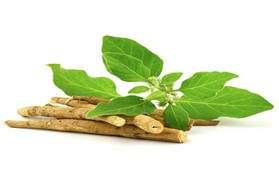
Figure 3 : Ashwagandha.
Biological Sources :
Ashwagandha consists of the dried mature roots of Withania Somnifera Dunal.
Family:
Solanaceae.
Geographical Source:
South Africa , Egypt, Congo , Pakistan, in India it is a found in M.P. , U.P. , Panjab, Gujrat and Rajsthan.
Chemical Constituents:
Pyrazole alkaloids: With a somnine,uschohygrine,anahygrine,anaferine; steroidal . Lactone: Withanolides.
Uses :
- Reduce anxiety.
- Diabetes.
- Boost fertility.
- Improve brain function.
- Lowers stress.
- Improve memory.
- Uses in Insomnia.
- Brahmi:
Synonyms:
water hyssop ,Indian Pennywort , Kapotvadka ,Somvalli & Saraswati etc .
Botanical Name:
Bacopa Monnieri.
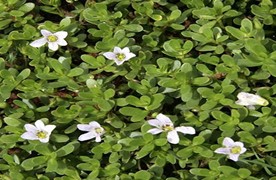
Figure 4 : Brahmi
Biological Sources:
Brahmi is the fresh or dried herb of Centella asiatica (L.) (syn. Hydrocotyl asiatica Linn.).
Family:
Umbelliferae.
Geographical Source:
Native to the wetlands of southern and Eastern India, Australia, Europe, Africa, Asia, and North and South America.
Chemical Constituents:
Hersaponin, apigenin, D-mannitol, monnierasides I-III, plantainoside B and cucurbitacin; the alkaloids brahmine, herpestine and nicotine.
Uses:
- In Ayurvedic medicine, brahmi ,has been used as a solution for seizures.
- Managae the symptoms of anxiety .
- Reduce stress
- Memory booster.
- Reduces blood pressure.
- Treatment of Insomnia.
- Cures urinary problems.
- Sarpagandha :
Synonyms:
Indian snakeroot, Rauwolfia serpentina, snakeroot, snakewood, serpentine, Racine de Serpent, Raudixin,Nakuli, nakuleshta, bhujangakshi, gandhanakuli, sarpangi, suarasa, mukta, dhavalavitapa, chandramara etc .
Botanical Name
Rauwolfia serpentina Benth. Ex Kurz.
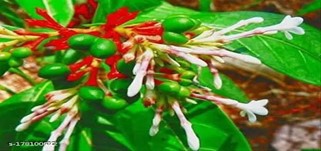
Figure 4 : Sarpagandha .
Biological Source :
It consist of the dried rhizome and roots of Rauwolfia serpentine.
Family :
Apocynaceae.
Geographical sources :
It is also found in India Burma, Thailand, Philippines, Vietnam, Indonesia, Malaysia, Paki-stan and Java. In India it occurs in the sub-Himalayan, Assam, especially in Dehradun, Siwalik range, Rohelkhand, Gorakhpur ascending to 1,300 m, east and west ghats of Tamil Nadu, in Bihar (Patna and Bhagalpur), Konkan, Karnataka and Bengal.
Chemical Constituent :
Ajmalicidine, ajmalicine, reserpine, sargagine, serpentine, serpentinine, ajamline, rauwolfinine, serpinine etc.
Uses :
- Relieve from depression.
- Use in Insomnia.
- Production of sleep – inducing .
- Blood pressure – lowering drugs .
- Improve digestion.
- Vacha :
Synonyms :
Calamus, sweet calomel, sweet flag, sweet sedge, myrtle flag, Haimavati, Sadgrantha, Bach, Vekhand, etc.
Botanical Name :
Acorus calamus Linn. (Acoraceae).
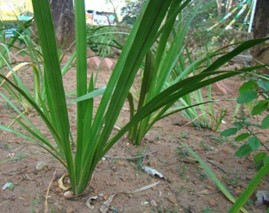
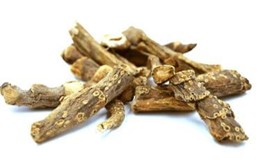
Figure 5 : Vacha.
Biological Sources:
Calamus consists of dried rhizomes of Acorus calamus Linn.
Family :
Araceae
Geographical source :
Marshy tracts of Kashmir, Sirmaur (Himachal Pradesh), Manipur and the Naga hills. It is regularly cultivated in Koratagere Taluk in Karnataka and other parts of India.
Chemical Constituents :
Acolamone, acorenone, acoragermacrone, acoramone, acorone, calacone, calcorene, calamine, calamenol, calamone, calamenone, calarene etc
Uses :
- It is extensively used in the management of epilepsy in the ancient texts.
- Neuroprotective.
- Reduces inflammation.
- Antioxidant.
- It improves your memory.
- Nervine stimulant.
- Anticonvulsant .
- Jatamansi:
Synonyms :
Tapasvini, nalada, pista, mura, jata, vilomasha, butajata, mansi,Spikenard etc.
Botanical Name :
Nardostachys jatamansi.
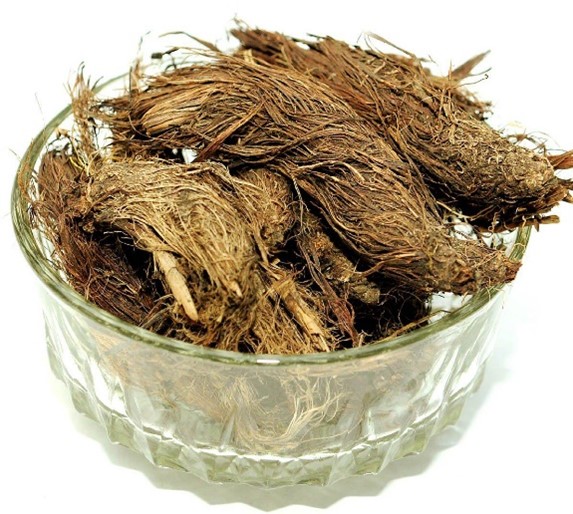
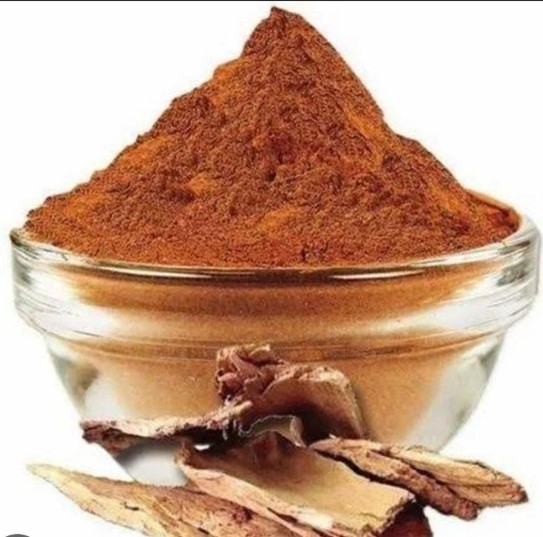
Figure 6: Jatamansi
-
Jatamansi
Biological Sources:
It consists of dried Rhizome, stolons and roots of Valeriana wallichii DC.
Family :
Valerianaceae.
Geographical Source:
found abundant in Himalayas, Afghanistan and Pakistan.
Chemical Constituents :
Sesquiterpenoids,Monoterpenes,Alkaloids,,Flavonoids,Glycosides,Triterpenoi-ds,Coumarins etc.
Uses :
- Helps to balance all the three doshas & reduces the episodes of seizures.
- Boosting memory.
- Treat Insomnia.
- Manage blood pressure.
- Nerve relaxing smell
- Enhance nervous function.
- Arjuna :
Synonyms:
Dhananjaya, Kaakubha, Kakubha, Aartagala, Indravriksha, Paartha, Virataru, Viravriksha.
Botanical Name:
Terminalia arjuna (Roxb.) W. & A


Figure 7 : Arjuna
Biological Source:
Arjuna consists of dried stem bark of the plant known as Terminalia arjuna Rob.
Family:
Combretaceae.
Geographical Source :
Arjuna usually refers to the bark of the Terminalia arjuna tree, native to India.
Chemical constituent :
Polyphenols, flavonoids, tannins, triterpenoids, saponins, sterols and minerals are the major constituents of T. arjuna
Uses :
- Anti – inflammatory effects.
- Antioxidant properties.
- Cardiovascular health.
- Wound healing.
- Liver support.
- Respiratory health.
- Diuretic action.
- Shatavari :
Synonyms :
Satavri, shatamuli, bahusuta, vari, narayani, shatapadi, pivari, indivari, bhiru, shatvirya etc .
Botanical Name:
Asparagus racemosus Willd.
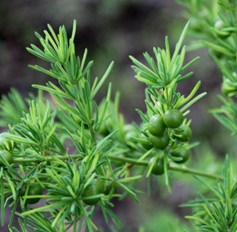
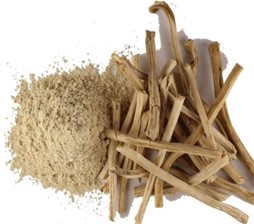
Figure 8: Shatavari
Biological Source :
It consists of dried roots and leaves of plant.
Family:
Liliaceae.
Geographical Source :
West Bengal and south and central India.
Chemical constitutes :
steroidal saponins known as shatavarins, oligosaccharides, mucilage, isoflavones, alkaloids, flavonoids like rutin and quercetin and sterols such as sitosterols.
Uses :
- Used in treatment of epilepsy.
- Manage anxiety.
- Use in alcohol withdrawal.
- Used to attempt to treat conditions related to hormone imbalance such as polycystic ovarian syndrome ( PCOS) and infertility.
- Support immune system.
- Improve digestion issues.
- Support female reproductive system.
- Promotes fertility.
- Helps to regulate menstrual cycle.
EXTRACTION METHOD:
Extraction is the first step to separate the desired natural products from the raw materials . There are num.of extraction method are available for separation of desired product form material. So here Maceration extraction method are use .
Maceration :
The maceration method is a simple extraction technique where the drug substance is soaked in a solvent (usually alcohol or water) to extract its active compounds.
Procedure :
- 5 gm powder of Ashwagandha, Sarpagandha, Brahmi, Vacha, Jatamansi, Arjuna & Shatavari taken and weigh aqurately.
- Then each powder mix in 25 ml water & stand for 48 hr with frequent agitation,until soluble matter is dissolved.
- After 48 hrs & filter with Whatman no .1 filter paper.
- Collect the filtrate.

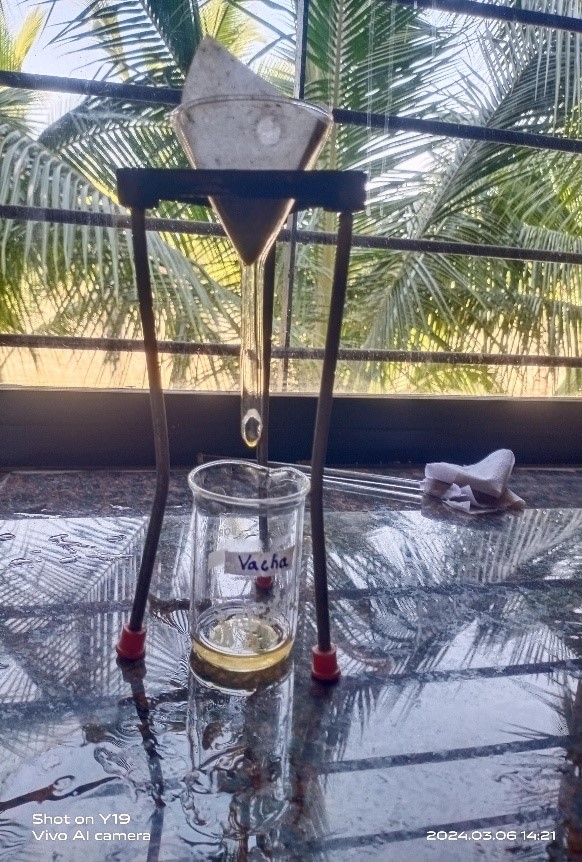
Figure 9 : Extraction Of Herbal drugs.


 Gaytri Anil More *
Gaytri Anil More *
 Shital D. Pande
Shital D. Pande

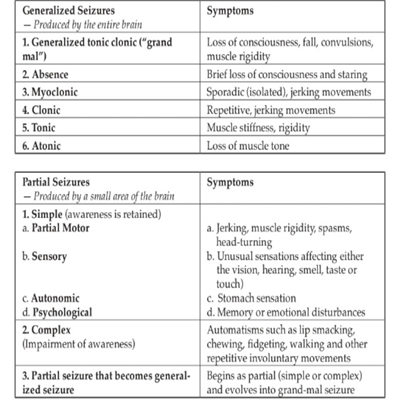
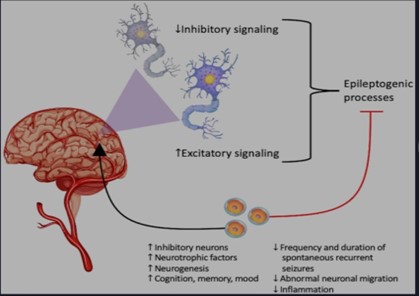












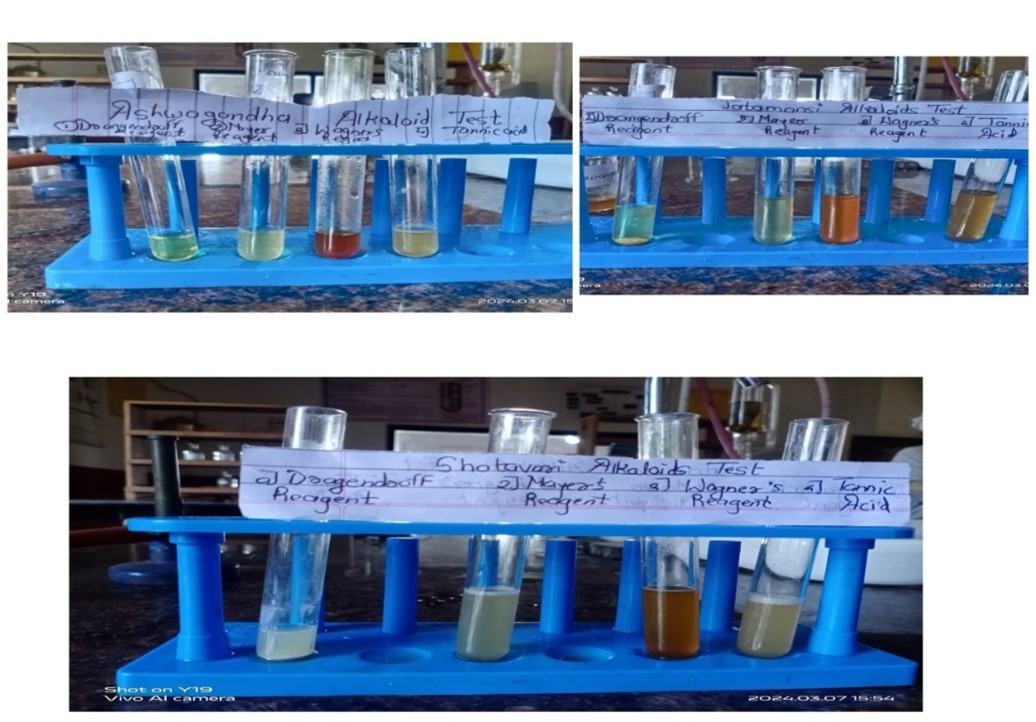

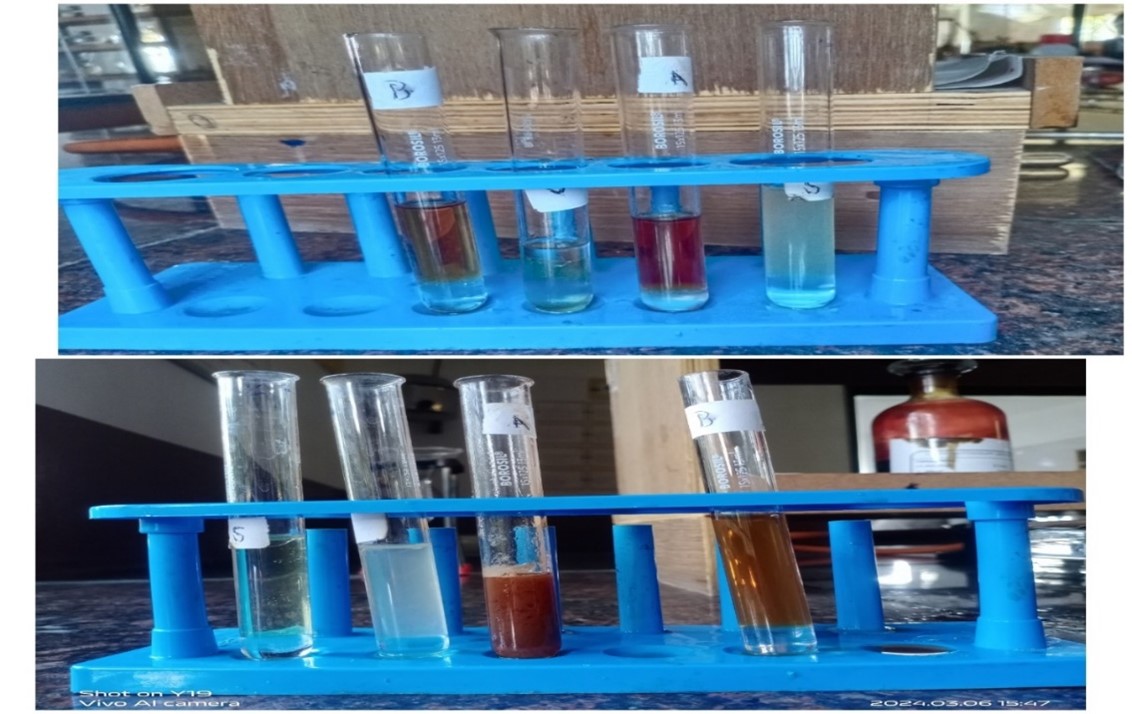

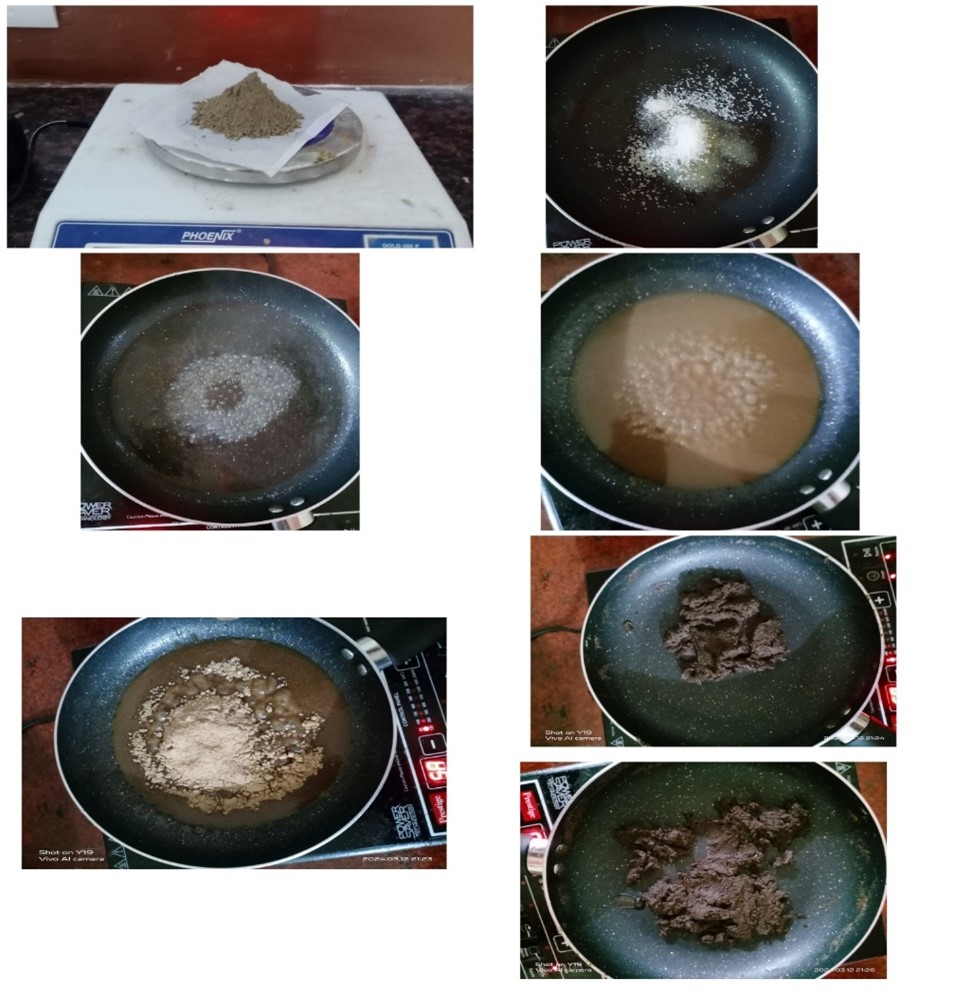

 10.5281/zenodo.11386977
10.5281/zenodo.11386977